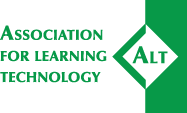Grabinger, R. Scott and Dunlap, Joanna C.
(1995)
Rich environments for active learning: a definition.
Association for Learning Technology Journal, 3 (2).
pp. 5-34.
ISSN 0968-7769
![[img]](https://repository.alt.ac.uk/style/images/fileicons/application_pdf.png)  Preview |
|
PDF (Association for Learning Technology Journal, Vol. 3, No. 2, 1995, pp. 5-34)
- Published Version
Download (2MB)
| Preview
|
Abstract
Rich Environments for Active Learning, or REALs, are comprehensive instructional systems that evolve from and are consistent with constructivist philosophies and theories. To embody a constructivist view of learning, REALs: promote study and investigation within authentic contexts; encourage the growth of student responsibility, initiative, decision making, and intentional learning; cultivate collaboration among students and teachers; utilize dynamic, interdisciplinary, generative learning activities that promote higher-order thinking processes to help students develop rich and complex knowledge structures; and assess student progress in content and learning-to-learn within authentic contexts using realistic tasks and performances. REALs provide learning activities that engage students in a continuous collaborative process of building and reshaping understanding as a natural consequence of their experiences and interactions within learning environments that authentically reflect the world around them. In this way, REALs are a response to educational practices that promote the development of inert knowledge, such as conventional teacher-to-student knowledge-transfer activities. In this article, we describe and organize the shared elements of REALs, including the theoretical foundations and instructional strategies to provide a common ground for discussion. We compare existing assumptions underlying education with new assumptions that promote problem-solving and higher-level thinking. Next, we examine the theoretical foundation that supports these new assumptions. Finally, we describe how REALs promote these new assumptions within a constructivist framework, defining each REAL attribute and providing supporting examples of REAL strategies in action.
Actions (login required)
 |
View Item |

